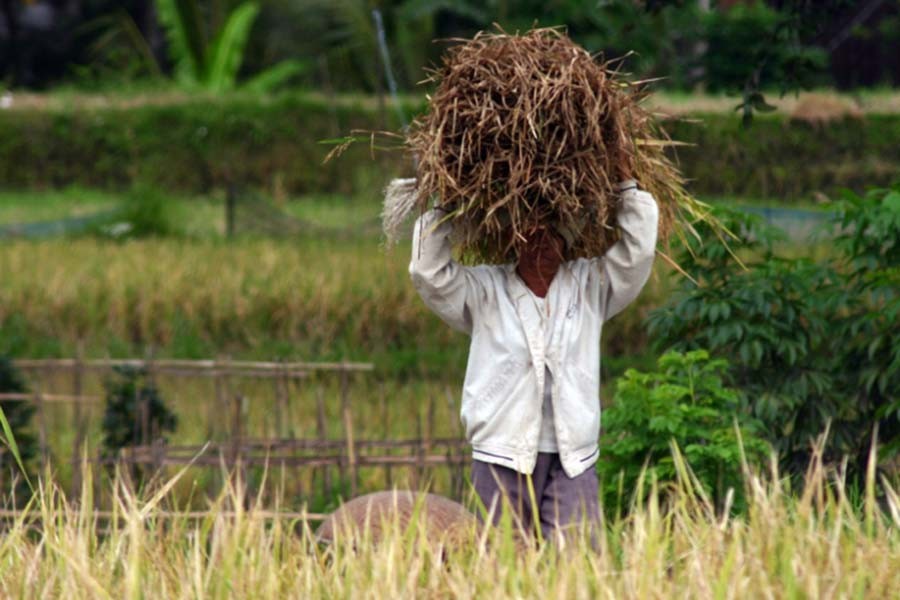Historically speaking, share-cropping had been the predominant tenancy system in Bangladesh. The system was generally criticised for its inherent exploitative and anti-incentive syndromes. This is because the owner of the land used to share one-half of the output without paying a penny for the inputs that the tenant used. However, with the spread of modern paddy and wheat cultivation, some changes in the contractual arrangements could be noticed in different parts of the country.
But before we speak on the context and the impacts of rural tenancy market, it would be pertinent to review the established theoretical perspectives on such markets. The debate dates back to a few hundred years. Adam Smith argued that the system of share-cropping is inherently 'exploitative', and injects no incentive to the tenants for investment in modern inputs. Smith took for granted that both landowner and tenant would find no incentive to invest on land.
Alfred Marshall, on the other hand, held a stronger view against share-cropping system. He argued that in addition to the negative impact on long-term investment from both the parties, the tenant would also lose the incentive to cultivate land intensively and efficiently. It is simply because his sweat under the sun would reap home only one-half of the additional output. So, why work hard? That means, labour-input under share-cropping would be less than other tenancy arrangements to impinge negative impact on the total output. In such a 'loss-loss' situation, incomes of both the landowner and the tenant might go down.
The Hong-Kong-born American economist Steven Ng-Sheong Cheung came up with a compromise solution. He argued that if proper mechanisms could be developed to ensure optimal amount of labour of the tenant, share-cropping could be as efficient as other arrangements. In fact, he suggested three such mechanisms where sharing of the input costs is one. But other economists opined that with the development of agriculture, share-cropping is expected to surrender wider space to the fixed-rent system - and in course of time and under a system of information symmetry, share-cropping might even cease to exist.
How far is the trend true in case of Bangladesh? Let us put the proposition on an empirical plane. Out of the rented-in lands in the then East Pakistan, now Bangladesh, 91 per cent was transacted under the share-cropping system. But with the advent of the Modern Variety (MV) paddy since the late 1970s, seasonal fixed-rent tenancy and, to some extent, annual and medium-term (three to seven years) leasing arrangements began to claim some of the shares of the share-cropping system. For example, the 1996 Agricultural Census reported a substantial decline in the area under share-cropping from three-fourths in 1984 to two-thirds in 1996. Survey data used in this kind of research also record a decline by nearly one percentage points per year over time - from 72 per cent in the 1980s to 59 per cent in most recent years. Thus, it is quite conceivable that adopter-farmers have growingly become interested in fixed-rent system, considering a relatively higher return from investments made on modern inputs under this system. This also shows that farmers in Bangladesh have become relatively more risk-takers than risk-averse by switching from share-cropping to fixed-rent system. But in rain-fed areas, where modern technology is yet to penetrate, share-cropping is as widespread as it was before.
With a view to gaining insights into the changes in the tenancy market over time, we can draw upon some data. First, the proportion of land under own cultivation significantly declined from about 77 per cent in the 1980s to 53 per cent in most recent years. Second, the proportion of land under tenancy (rented land) increased from one-fourths of cultivated land to about one-half during the same periods. And third, land under the traditional exploitative (and disincentive to farmers) has almost been constant over time and it seems it is ready to leave space for the newly emerging and relatively more lucrative alternative options, such as fixed-rent or mortgage system. The economic reasons behind the shift in preference is mainly the incentive to work hard more, which is almost absent in share-cropping system. As a result, increased use of modern inputs in agriculture takes place leading to the enhancement of yield and production levels.
Most of the tenants are small and marginal farmers. The small and marginal farmers rent in land for two main purposes. On the one hand, it is economical for them to rent in land and, thus increase the capacity-use of their farm establishments. On the other hand, they think that tenancy is socially more prestigious than working as day-labourers in others' land. By and large, about 57 per cent of the transacted lands are operated by households who own less than 0.2 ha, and 38 per cent are controlled by those who own 0.2 to 1 ha of land.
Of course, the tenancy arrangement could also be cast in terms of land ownership groups. About one-thirds of rural households used to cultivate under share-cropping arrangements in the 1980s; the share has of late dropped to 28 per cent. Side by side, the proportion of households under fixed-rent system increased from about 16 per cent to 24 per cent.
Thus, it appears that alternative tenancy arrangements are evolving over time and interestingly, share-cropping seems to be outpaced by the new arrangements apparently in favour of the tenants. The more agricultural practices get diversified and mechanised, the more non-agricultural sector edges up. The more is likely to be the supremacy of the newer methods of contractual arrangements. In other words, farmers in Bangladesh have been moving from risk-averse to risk-loving farming systems.
The writer is a former Professor of Economics at
Jahangirnagar University.


